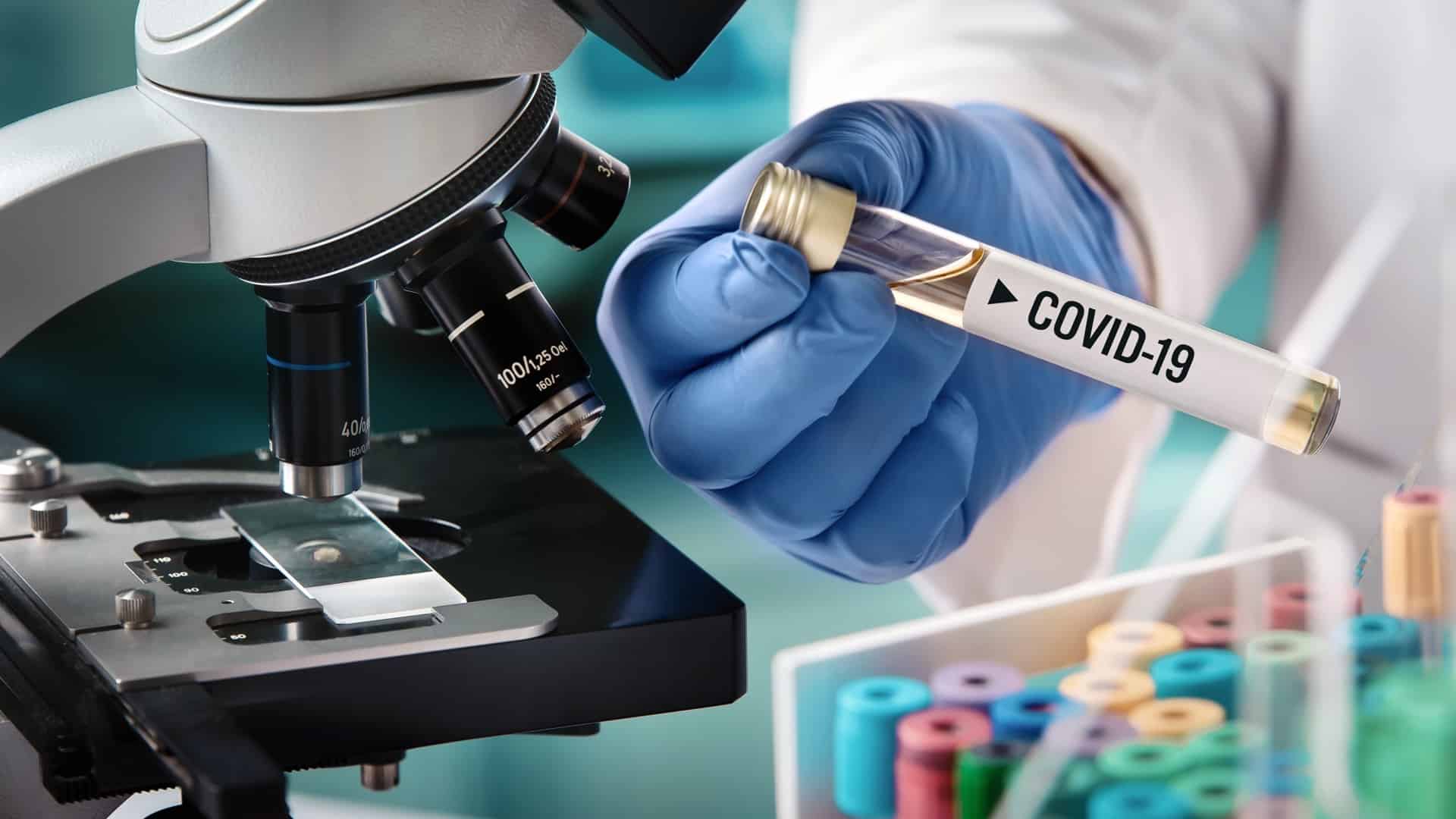
The Impact of COVID-19 on Employee Experience
There is no denying that COVID-19 has drastically changed the work landscape in unprecedented ways. No one could have predicted that a pandemic would force a majority of industries and companies across the globe to shift the work environment in a matter of days. The sudden onset of the virus forced tens of millions of workers to a remote modality and changed the way they do their jobs. Now, with a vaccine arriving and 2020 coming to a close, the question remains, what will the future workforce look like? We’ve found that COVID-19 has workers permanently re-imagining their schedules.
The data is very conclusive. The overwhelming majority of workers do not want to go back to working in the office full-time, while they also do not want to stay working from home full-time either. Research from Smartway2’s Returning to Work Survey found that 90% of respondents would prefer a hybrid model, meaning a combination of remote and in-office work.
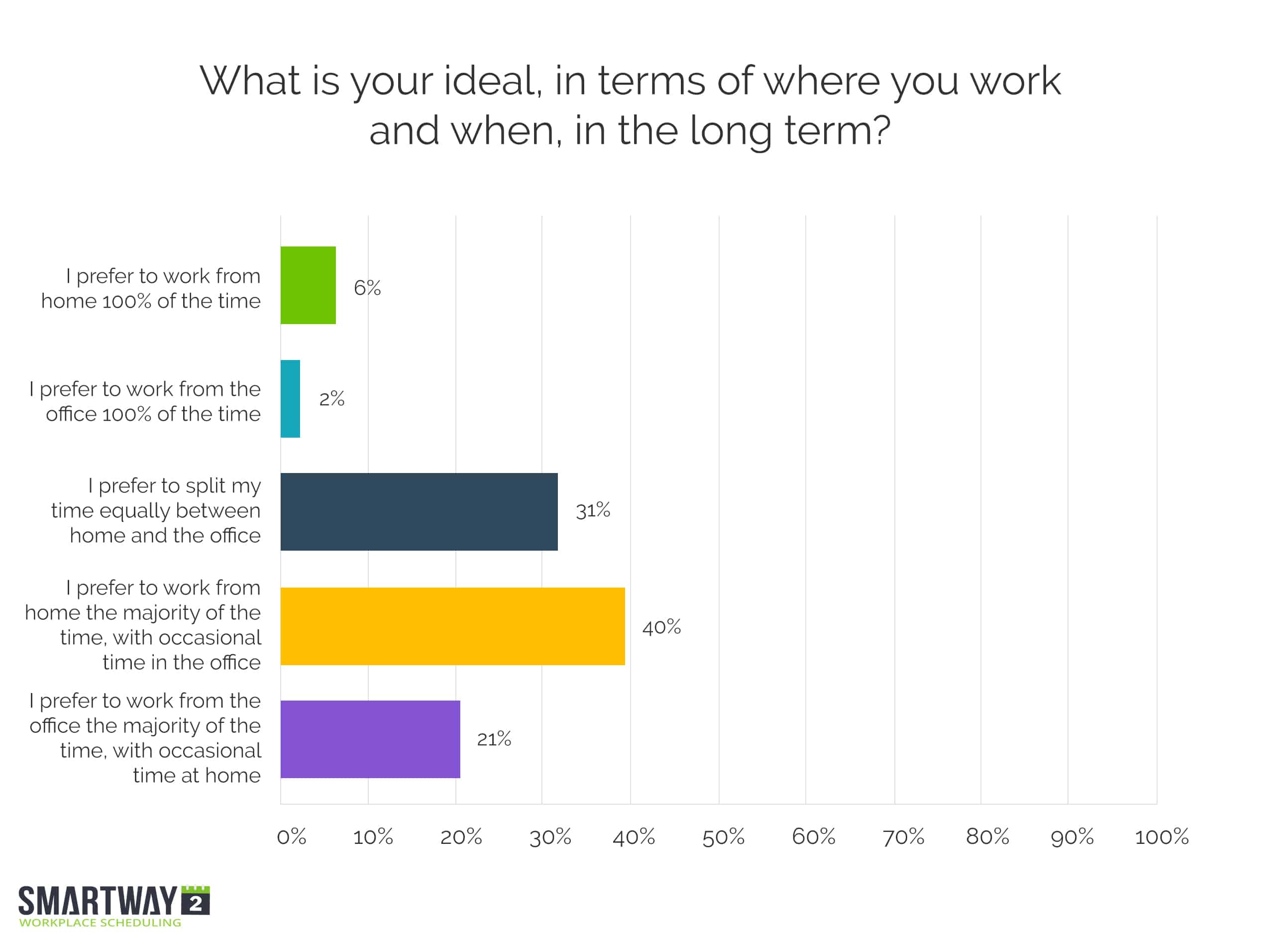
What does all this mean? And, what is this impact for employers? We are going to spell it out for you.
The COVID-19 pandemic has allowed employees to see that it is possible to get their jobs done with a flexible work schedule. Overall, employees have become comfortable with flexibility, which is something a lot of people do not want to give up. This means employers are going to have to embrace more agile work environments – offering greater flexibility – in order to keep workers happy. The shift in the workplace and the way people do their jobs will provide an opportunity for organizations to reduce real estate costs and improve sustainability. This may lead to some organizations downsizing their office square footage while others repurpose existing space to better suit the new needs of their company.
To learn how to boost employee experience and space utilization amidst the pandemic check out our recent webinars.
Are Employees Comfortable Returning to the Office?
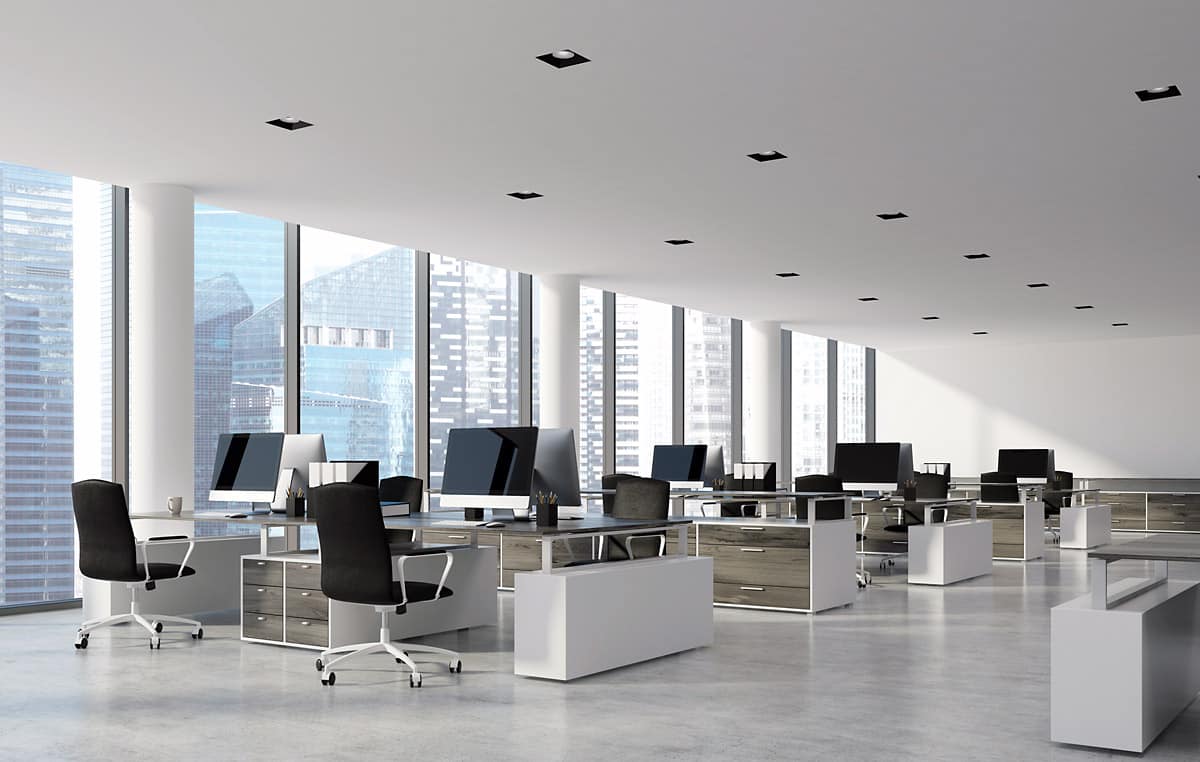
A recent Korn Ferry survey sheds light on the comfort level of employees returning to the office versus the expectation that they will actually have to go back.
The survey found that nearly three quarters, or 72%, of people said they are “not afraid of returning to the office” and that 74% “feel their colleagues will follow guidelines (wearing masks, social distancing).” Additionally, where it gets interesting, is that roughly half are unsure about returning: “53% say it is either only somewhat likely or not likely that they will return when the offices re-open.”
Only 14% said that returning to the office every day will be mandatory.
“A vast majority of professionals have spent the last several months working from home, and for many, the new routine has in fact made them more productive,” said Sarah Jensen Clayton, Senior Client Partner and Lead, North America Culture & Change. “But it’s still incumbent upon employers to create new, virtual ways to maintain organizational culture and employee engagement.”
How are workers holding up?
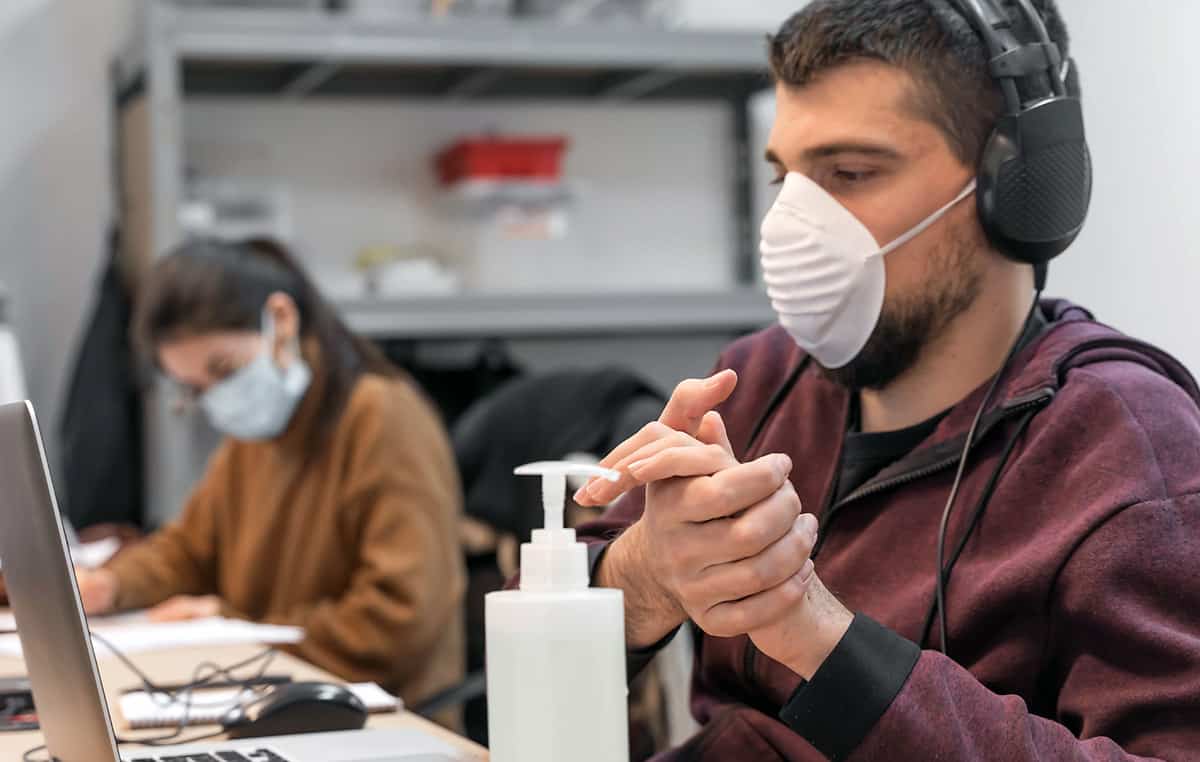
McKinsey and Company recently completed a survey that provides insight on the employee experience amid the pandemic. “We found that employees working remotely see more positive effects on their daily work, are more engaged, and have a stronger sense of well-being than those in non-remote jobs with little flexibility do. Parents working from home appear to be faring better than those who are more isolated are. Fathers working remotely seem much more positive about the experience than mothers are.”
Remote working
Before the pandemic the U.S. Bureau of Labor Statistics reported that 8% of people worked from home at least one day a week. Fast forward to the present where the President of Global Workforce Analytics estimates that by the end of 2021, 25-30% of the workforce will be working from home multiple days a week.
A recent Forbes article put the change of perspective into context, “Working from home can never be considered a trend again, or a privilege. For so many employees it’s become a part of their experience, a crucible moment when everything changed. From now on, it’s going to be a part of our lives. And instead of aiming to shape a better workplace experience for our employees, we’d best let our employees’ experiences do the talking.”
With that being said, it is important to point out that the data concluded remote working full-time is not what people want. A survey from Vocon found that 40% of executives reported a decrease in productivity due to remote working fatigue.
Hybrid Working
Hybrid working is a combination of work from home and work in the office. A hybrid model entails a high level of flexibility and typically lets workers choose how, where and when they get their job done.
Major companies across the world, including Google, Facebook, Intel and Microsoft, have already committed to this style of work.
Leading global technology company Barco determined several benefits to a hybrid workstyle, such as increased productivity, a positive work-life balance, saving time commuting, the re-introduction of collaboration with people seeing each other in person as well as the added public health benefits.
“Not only will hybrid work models help businesses to remain agile and give them the ability to adapt quickly to unexpected circumstances to keep their operations running in these especially uncertain times (e.g. employees in temporary quarantine, governmental measures with new spikes of COVID-19,…), the new models also have some clear benefits for the well-being and productivity of their employees…”
Automating COVID-safe workplace procedures
The introduction of workplace scheduling tools like Smartway2 can automate a COVID safe workspace for all people in the office.
Our tools can help in the following ways:
- Enforcing Social Distancing Policies
- With Smartway2 you can set a specific radius around desks to ensure workers are keeping the proper distance.
- Users can only book desks that are COVID-safe.
- When someone makes a booking, Smartway2 automatically takes all surrounding desks out of service.
- Fully automate physical distancing in your workplace.
- Works with CAD floor plans or just a simple image of your office layout
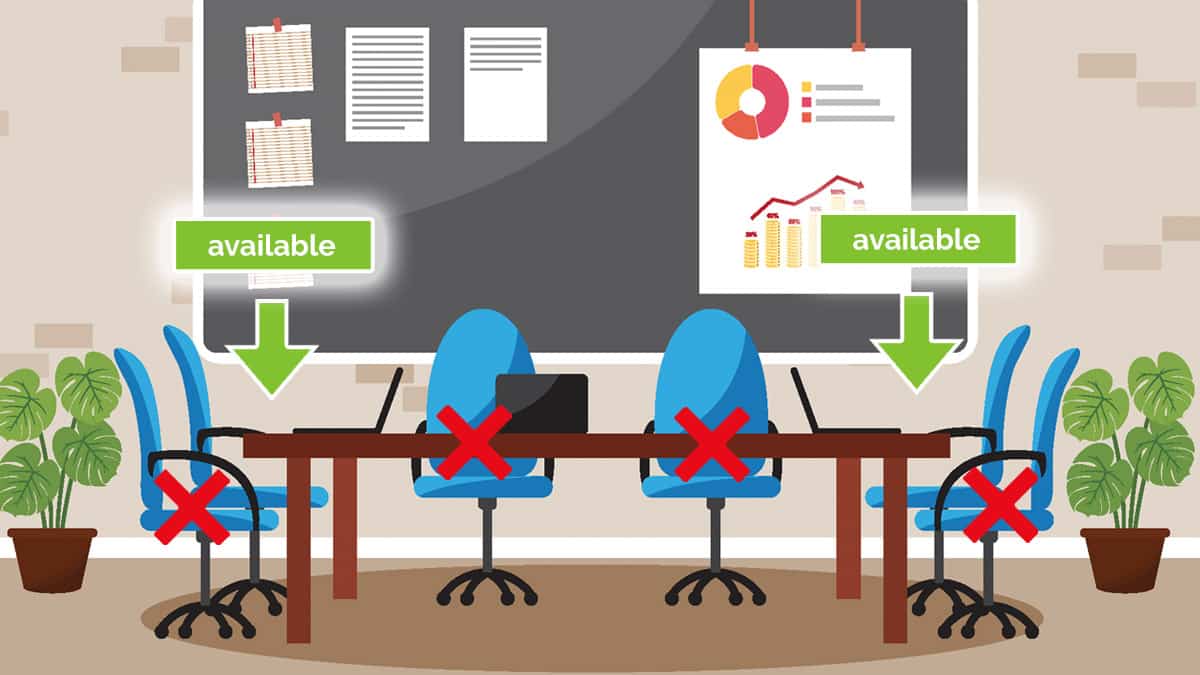
- Cleaning and Sanitation
- Reduce the chance of touch contamination by making sure that meeting rooms and desks are cleaned after use.
- Prevent people from booking desks that have been used in the past 48 hours.
- Each desk has a countdown timer, so you can see live how much time remains before a desk becomes available again
- Digital Desk Signage
- Using Smartway2’s desk display panels, you can clearly indicate which desks are out of service or awaiting cleaning
- Use Meeting Rooms for Overspill
- Work to utilize space that is no longer being used because of workflow changes.
- Open up available meeting rooms to provide employees with additional desk space
- Allocate meeting rooms as ‘overspill’ spaces in your office, e.g. if the cafeteria is full, automatically open up a conference room so people can book a safe place to eat their lunch
- Configure rules for each individual meeting room and users can see in real time which spaces are available to book
- Contact Tracing
- Keep track of who is where and when
- If one of your colleagues falls ill, run reports on whom they may have come into contact with so tracing can commence
- Identify risk levels and the reasons why
The touchless office
In order to help deter the spread of germs, transforming the technology in your office to be “touchless” is critical.
Workdesign.com writes, “The industry will need to embrace the need for a touchless office environment to help workers regain the confidence of working at a desk with hundreds of other people in cubicles nearby.”
The automation can include everything from check-in, to light switches and blinds to adjusting the temperature. The fewer surfaces that people are touching, the easier it is to deter the spread of viruses.
Advice moving forward
McKinsey & Company research found three important insights that they say can “support employees through this next phase of the crisis.” Their key findings include:
- Build on the trust and affiliation you’ve earned by continuing to be present, action oriented, empathetic, and fully transparent.
- Enable improvements in trusting relationships, social cohesion and individual purpose by prioritizing actions that will address a broad set of needs for the majority of your workforce.
- Use a combination of science, technology, data, and analytics to segment your employees like you would your customers and tailor interventions to support them in personalized and meaningful ways.
Our team is here to help you automate COVID-safety in your office, from social distancing to contract tracing. Click here to find out more.


